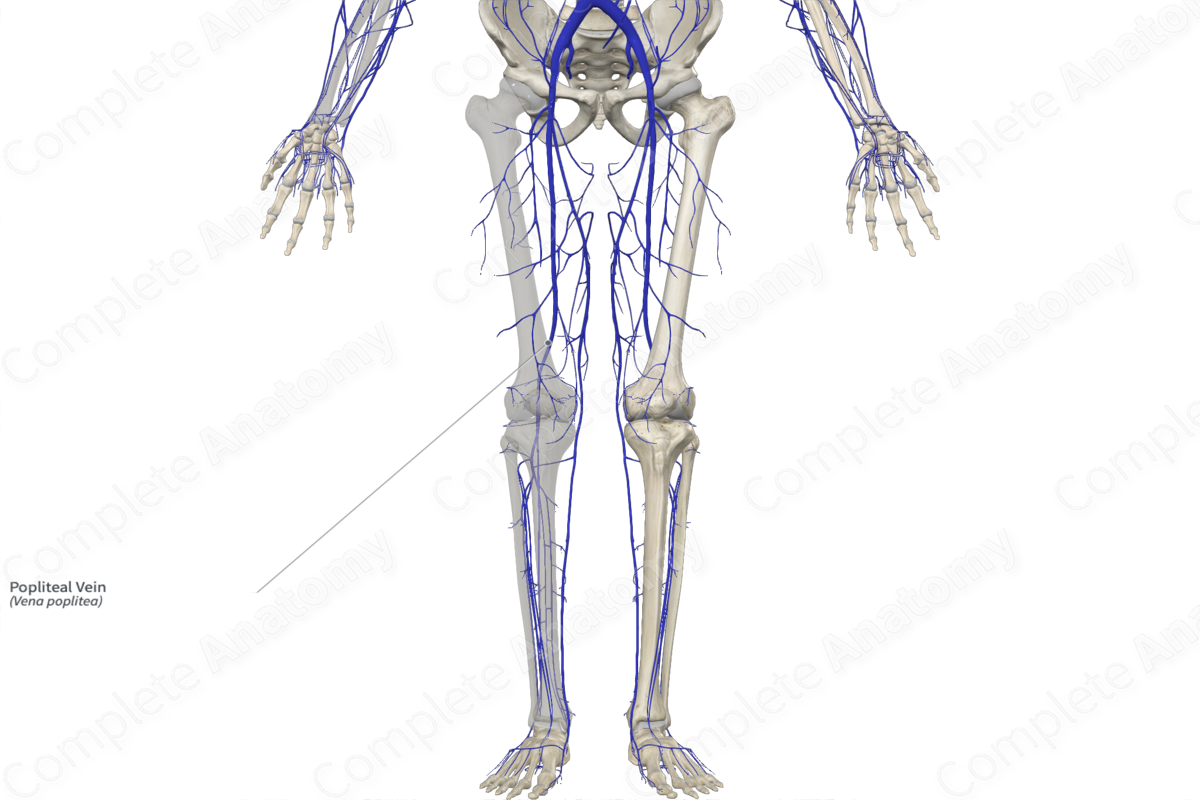
Quick Facts
Origin: Union of the anterior and posterior tibial veins.
Course: Ascends in the popliteal fossa and becomes the femoral vein at the opening of the adductor magnus muscle.
Tributaries: Small saphenous, genicular, and sural veins.
Drainage: Knee, leg, ankle, and foot.
Origin
The popliteal vein arises by the union of the anterior and posterior tibial veins at the distal border of the popliteus muscle.
Course
The popliteal vein ascends in the popliteal fossa, accompanied by the popliteal artery. It is usually more superficial to the artery, but in some cases, it may pass deep to the artery. The popliteal vein becomes the femoral vein as it passes through the adductor hiatus.
Tributaries
The popliteal vein receives the small saphenous, genicular, and sural veins.
Structures Drained
The popliteal vein receives blood from the deep veins coming from the knee, leg, ankle, and foot.
List of Clinical Correlates
- Deep vein thrombosis
Learn more about this topic from other Elsevier products
Popliteal Vein

The popliteal vein is formed from the confluence of the tibial veins in the upper third of the calf.




